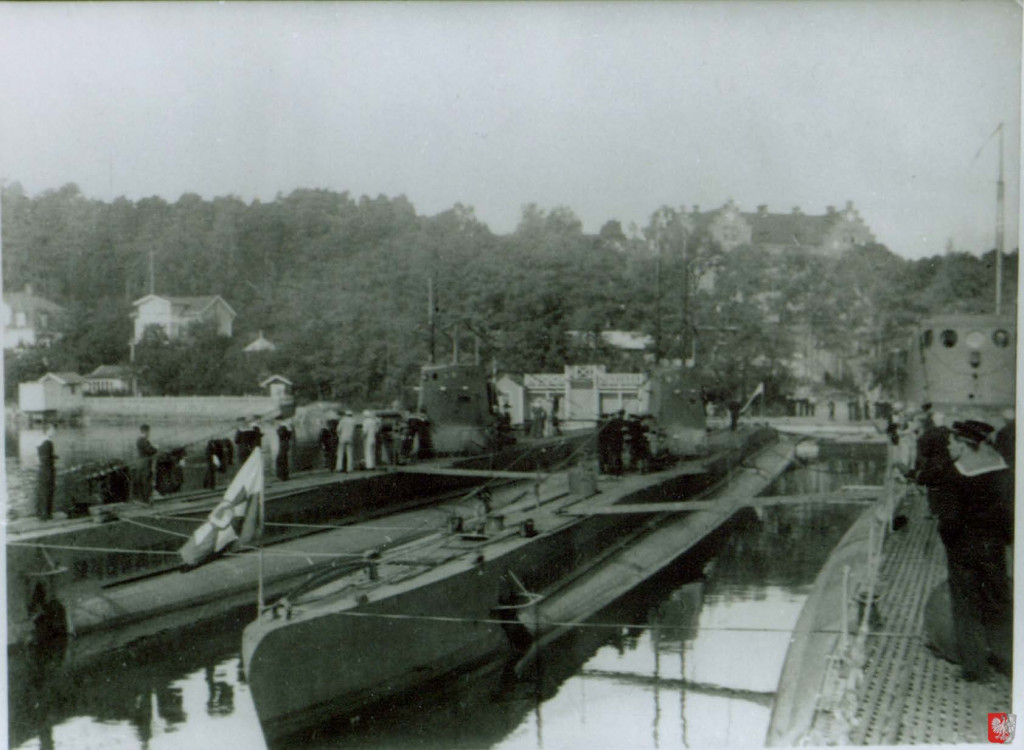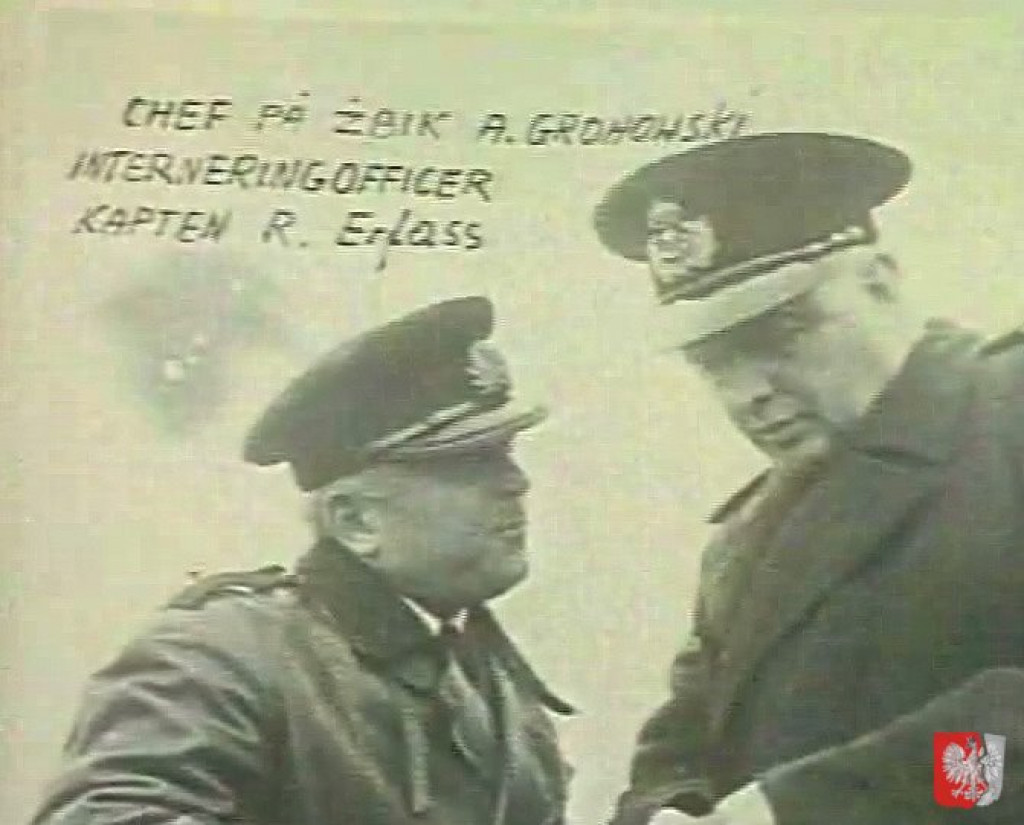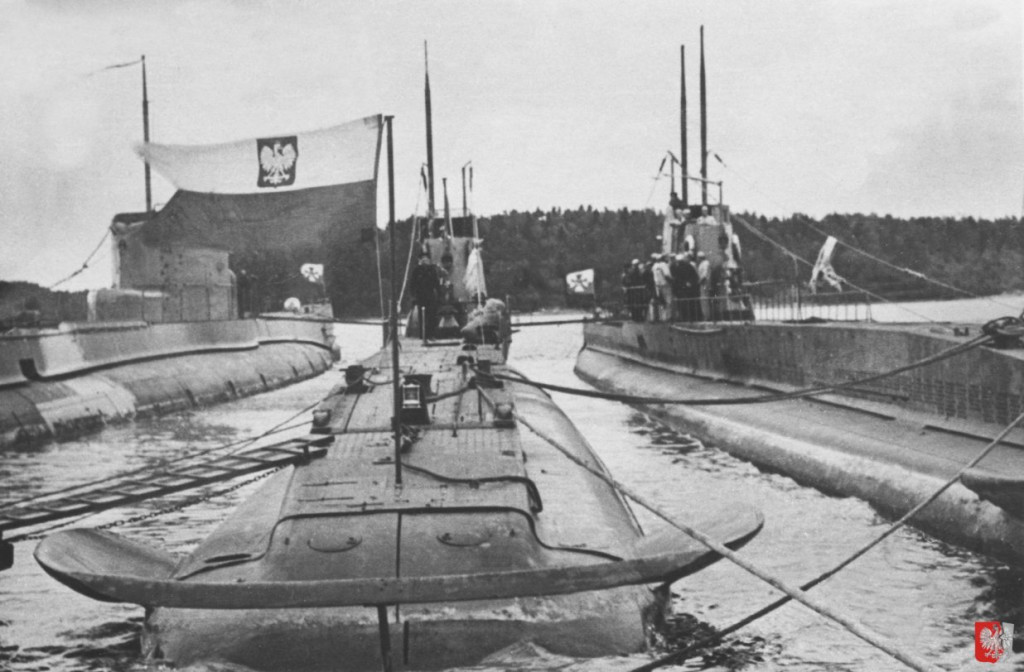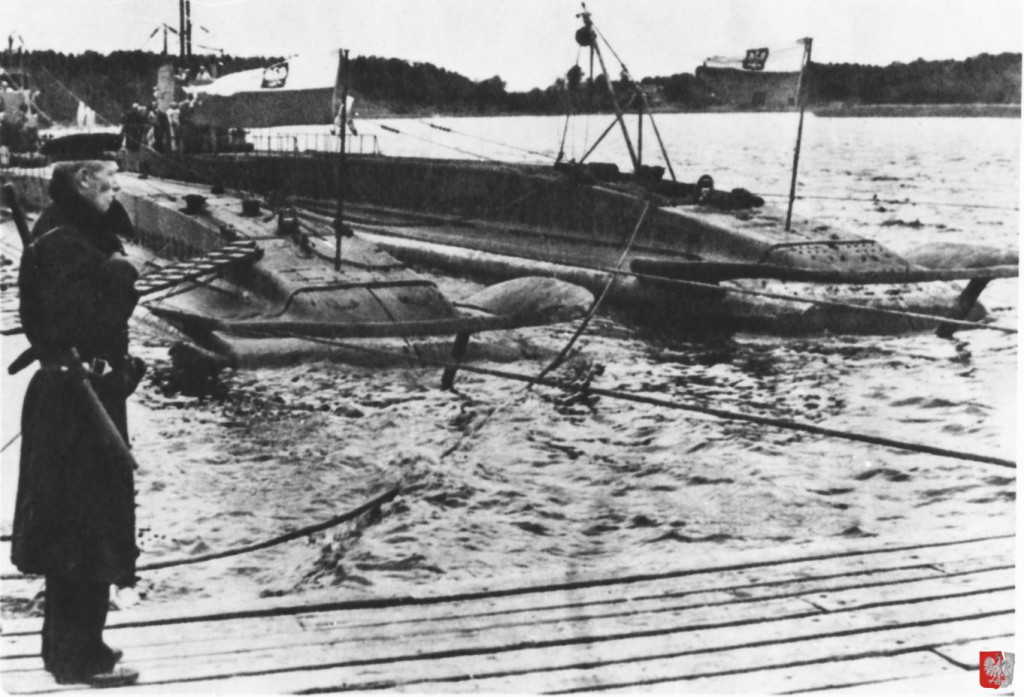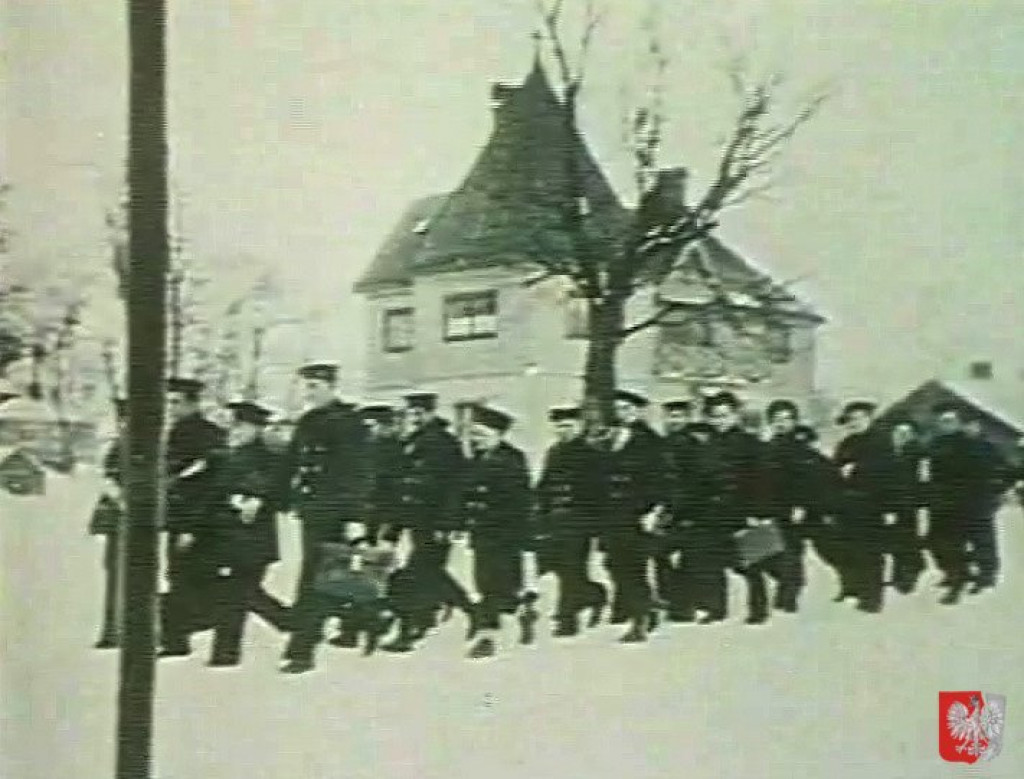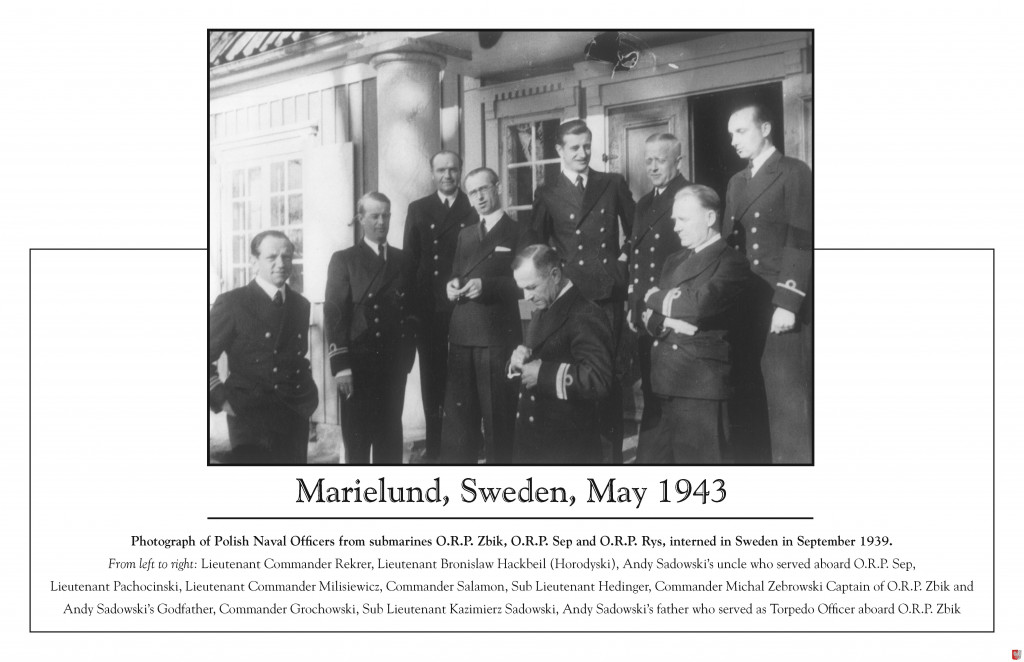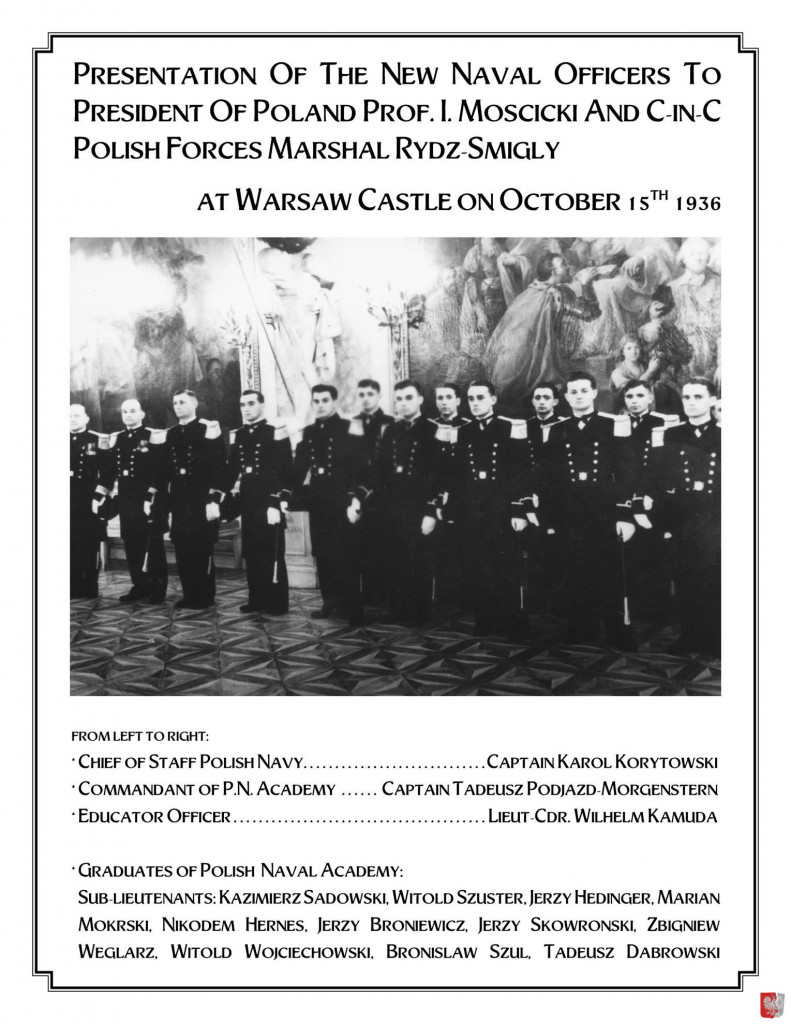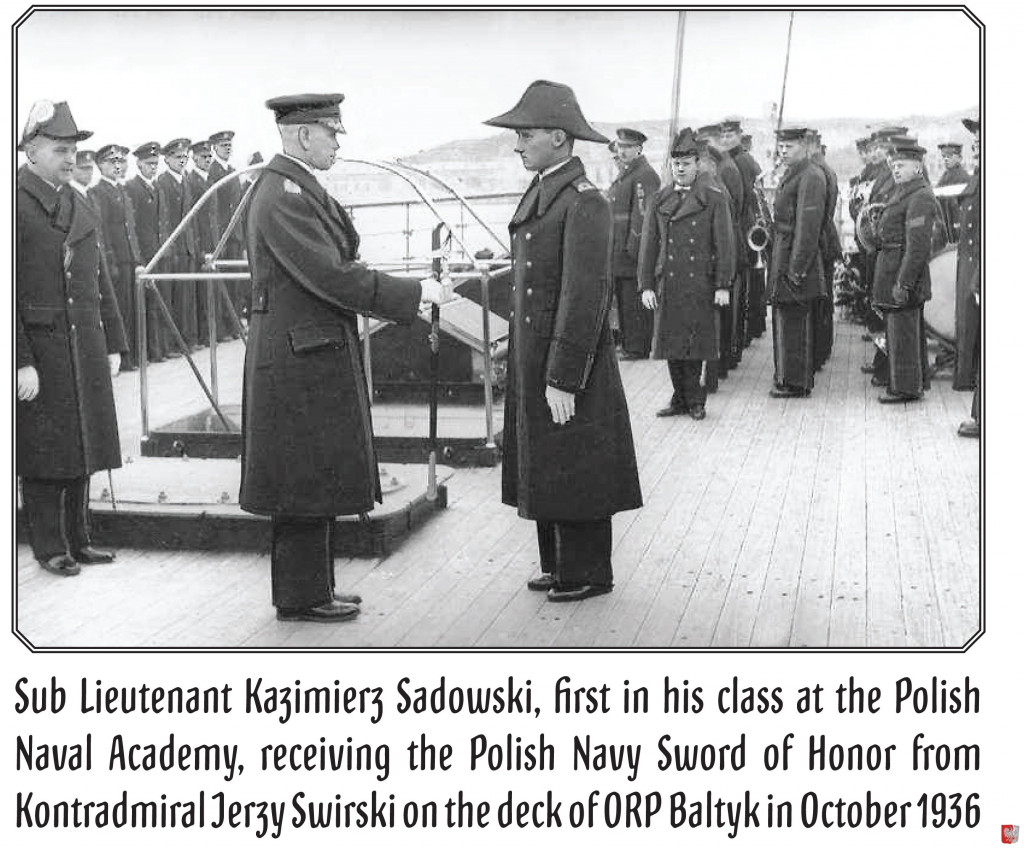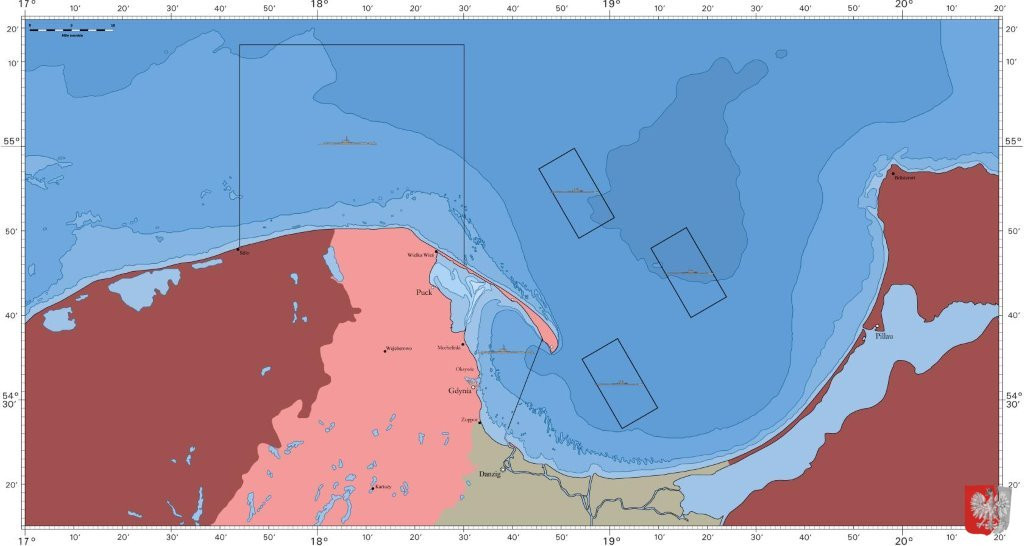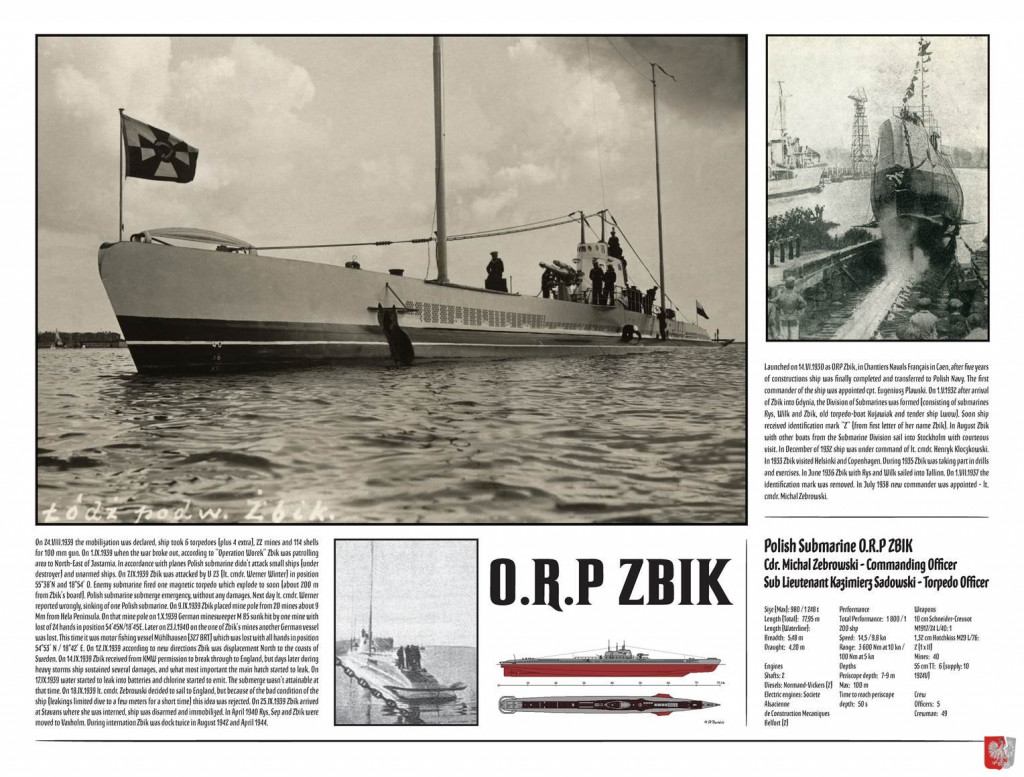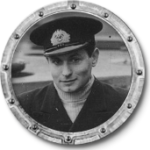
Polish Naval Memories of WWII
Sub-Lieutenant Kazimierz Sądowski
Defence of the Baltic during the September Campaign 1939 on submarine ORP Zbik.
Defence of the Baltic
The Polish Navy began its fight in the early morning of September 1st when high in the still air over Gydnia Bay ships fired at reconnaissance planes with the black cross of Germany upon their wings…. Then, a little before noon, the bombers came. In the first hour of that raid the Mazur went – the first ship to be sunk in this new war, the first of a long and tragic line. She went with her guns firing; and past her the remnants of the Fleet put out to sea – Gryf, Wicher and the minesweepers.
On 1st Sept there were 5 Polish submarines: ORP Sep, Zbik, Rys, Wilk and Orzel. On the 16th day of hostilities with Sep very badly damaged did she make to Stockholm where she was interned. Rys also went to Sweden. Zbik continued in action for 25 days.
The defence of the Polish coast remains one of the epics of the war. Oksywie, Hel and Westerplatte will stand for all time in gold among the battle honours of the Polish Navy.
From Navies in Exile by A.D Divine
Summary of ORP Zbik action in the Baltic 1st-25th September 1939
On 24th August 1939, in anticipation of a German invasion, Polish Navy submarine ORP Zbik was mobilized. Sub-Lieutenant Sądowski was assigned as Torpedo Officer and the Captain was Komandor ppor. Michael Zebrowski. ORP Zbik took 6 torpedoes (plus 4 extra), 22 mines and 114 shells for 100 mm gun. On 1st September 1939 when war broke out, according to “Operation Worek”, Zbik was patrolling the area to North-East of Jastamia. In accordance with plans the Polish submarine didn’t attack small ships (under destroyer) and unarmed ships. On 2nd September Zbik was attacked by German U-Boat U-23 (Lt. cmdr Werner Winter). Enemy submarine fired one magnetic torpedo which exploded too soon (about 200 m from Zbik’s board). ORP Zbik submerged without any damage. Next day Lt. Cmdr Werner reported wrongly, the sinking of the Polish submarine. On 9th September Zbik placed mine pole from 20 mines about 9 Mm from Hela Peninsula. On that mine pole on the 1st October German minesweeper M 85 sunk, hit by one mine with the loss of 24 hands. On 12th September 1939, according to new directions, Zbik was ordered north towards the coast of Sweden. On 14th September 1939 Zbik received permission from Polish Naval Command (KMW) to break through to England, but days later during heavy storms the submarine sustained several damages, most importantly the main hatch started to leak. On 17th September 1939 water started to leak into batteries and chlorine started to be emitted. Submerging wasn’t attainable at that time. On 18th September Captain (Lt. cmdr) Zebrowski decided to sail to England, but because of the bad condition of the submarine (leakings limited dive to a few meters for a short time) this idea was rejected. On 25th September Zbik arrived at Starvans where she was interned with 5 officers and 49 crew.
In April 1940, assisted by Swedish Naval units the Polish submarines, ORP Zbik, Rys and Sep, proceeded, under their own power to the naval fortress of Vaxholm near Stockholm. Within 24 hours and under international maritime law the submarines were stripped of armaments the radio equipment sealed, torpedoes disarmed and armed guards were posted aboard. The crews were quartered in a guarded camp surrounded by a three meter high fence.
From ‘Polish Submarines in Sweden’ by Andrzej Sądowski
Excerpt from ORP Zbik, Ledger of Military Operations in Baltic Sea, from 1st – 25th September 1939
On September 1st, 1939 ORP Zbik was located in military harbour in Hel. On that day at 7:00 am we were scheduled to leave for Gdynia in order to collect crew’s personal belongings, which were in Submarine Squadron barracks.
At 5:00am on that day I got an order from Division Commander through a Submarine Squadron’s flag-officer to leave the harbour immediately and go to the appointed sector. I was also informed that Westerplatte was invaded and Tezew bombarded. At the same time radiotelegraphic operator on duty reported distress signals from Westerplatte.
We left immediately and after leave the harbour, we submerged right away. While submerging I noticed a group of German airplanes over Hel coming from the west. After submerging we started approaching the appointed sector. The next radio signal we got was a warning not to emerge because of possible air strike. Up until this point I was not informed about the war nor did I receive any orders regarding our conduct at sea.
At around 11:00am I received an order to open a sealed envelope and I found out that a war has been declared and an order was given to attack enemy’s ships.
During the day I was approaching the sector. Several times, I noticed German plans, single planes and groups of planes, through the periscope, flying at different heights, usually close to the water, about 50 meters. In order to avoid them, I was submerging 16-18 meters. When it comes to war ships, a few trawlers and 2 destroyers. Destroyers were far away, travelling at different speeds and irregular courses. Our torpedoes were set for 3.5 submersions; I ordered to change 2 torpedoes for 2.5 submersions (German submersion was 2.7 meters).
I reached the sector after sundown. In the sector, I noted an increased enemy activity: a few trawlers, a few torpedo boats and frequent airplane flights. I did not notice any large ships or any military transport ships that would qualify for torpedo attack….


